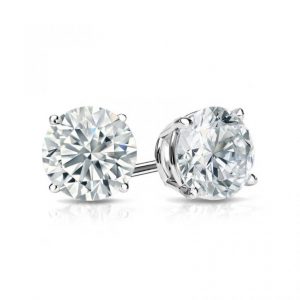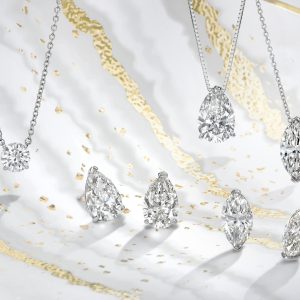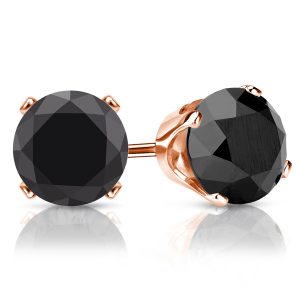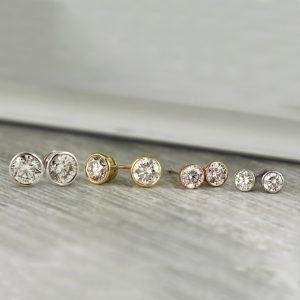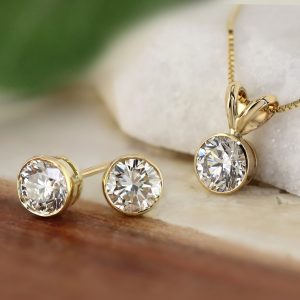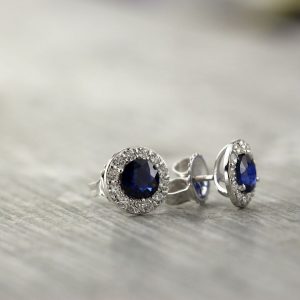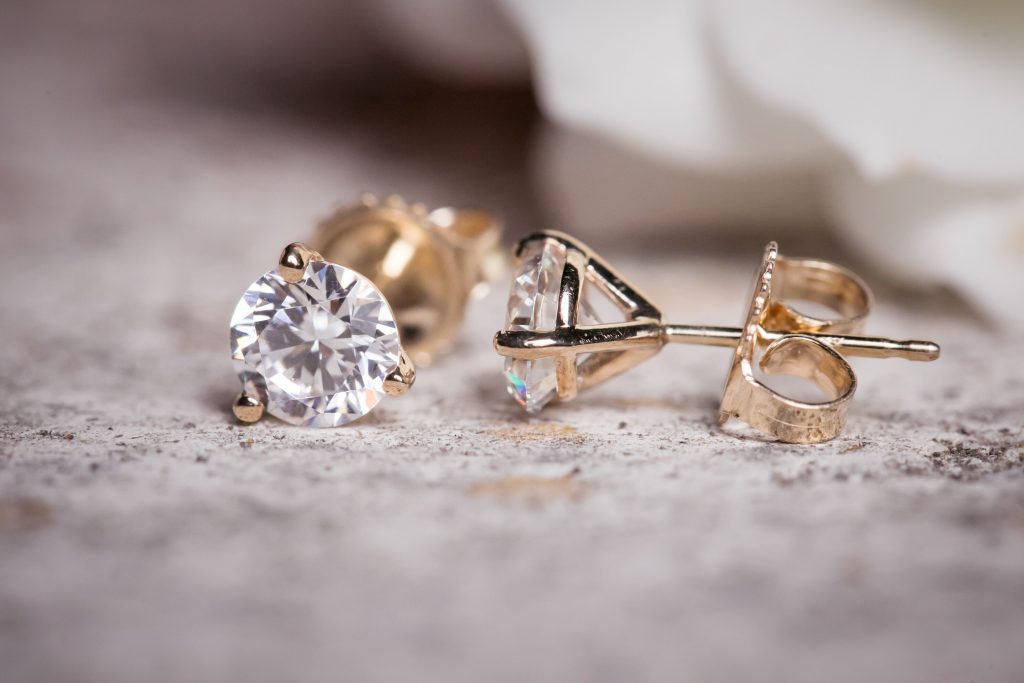
Lab grown diamonds may be compared to created diamond simulants but the fact is, lab-created diamonds are chemically and physically the same composition as genuine, natural diamonds. Having the same performance and strength. Today, scientists can grow diamonds that are, at a molecular level, the same as the diamonds that come from the earth. So why consider a lab diamond?
Well, everyone can make their own individual choice about whether they prefer natural or lab grown diamonds. At Diamond Studs, we offer both lab-created diamonds and natural mined diamonds that were formed in the earth’s crust over many billions of years. We offer only genuine diamonds from the earth and lab created diamonds that are exclusively set in quality precious metals of gold or platinum, suited to secure your stunning diamonds for generations to come. In this post, we’ll take a closer look at real diamonds vs. lab grown diamonds so you can understand the distinctions and make an educated selection for yourself. Afterall, life is about choice.
Real Diamonds vs. Lab Grown Diamonds: How They’re Made
People have adored diamonds for centuries because they’re beautiful and unique. But another major part of the appeal is how a diamond is formed. Genuine, mined diamonds are formed deep in the earth’s crust over more than a billion years, which is a wonder of nature. Diamonds are associated with eternity because each of the world’s diamonds has been around since before the advent of the human race.
On the other hand, it takes around six to ten
weeks to create a lab grown diamond. In a lab, scientists mimic the conditions
that produce diamonds in the earth’s crust. This produces a diamond with the
same chemical composition as natures counterpart, yet these laboratory made
diamonds do not carry the same history and meaning as a mother nature’s diamonds.
Real Diamonds vs. Lab Grown Diamonds: The 4Cs
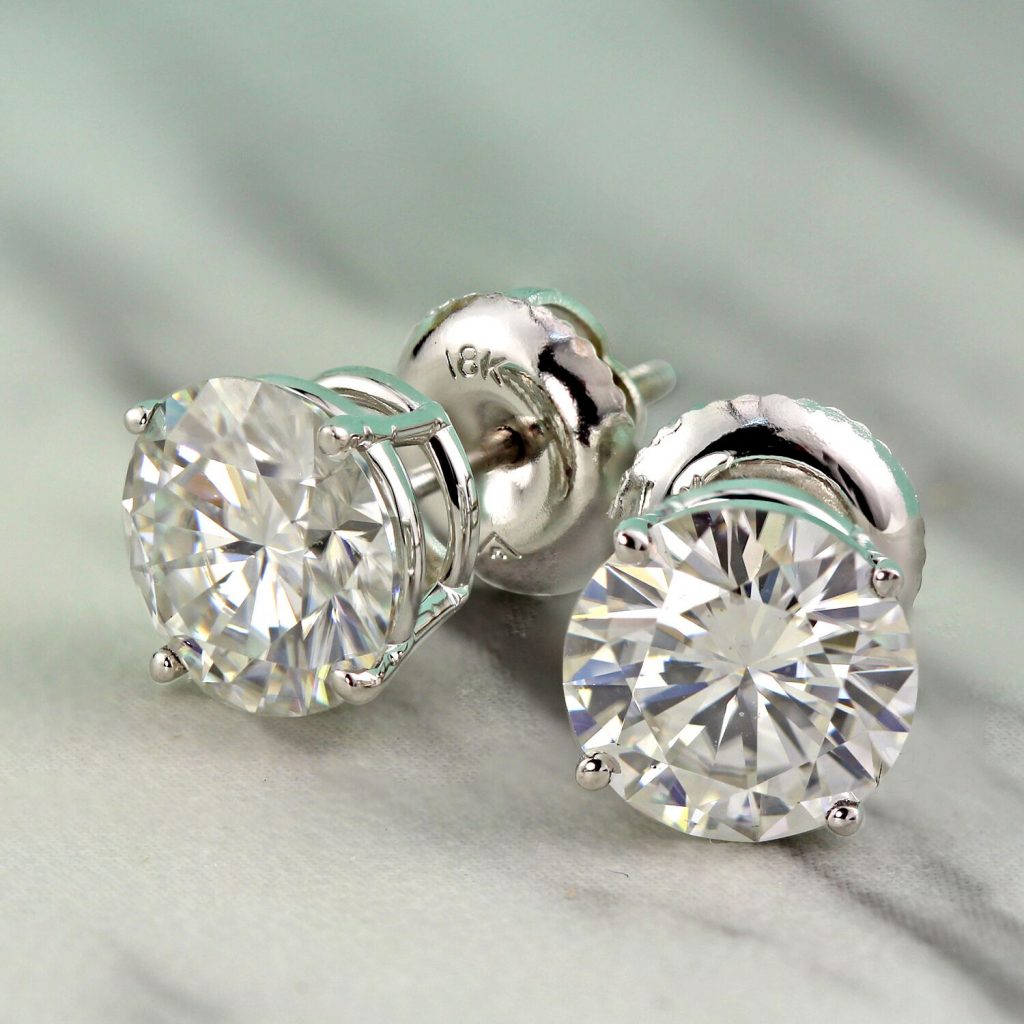
Are lab grown diamonds higher quality than real diamonds? No. Just like real diamonds, lab grown diamonds are all different, so there are lab grown diamonds of many different qualities. However, the qualities of lab grown diamonds are not assessed in the same way a real diamond’s would be.
Before every diamond is sold, a grading organization (such as the GIA or EGL USA) assesses its quality and issues a grading report. The 4Cs of a real diamond (color, clarity, carat, and cut) are noted on this report. But lab grown diamonds are not evaluated in the same way as real diamonds, so what you’ll see on their grading reports will be different.
After the GIA inspects lab grown diamonds, they issue a Synthetic Diamond Grading Report. Lab grown diamonds will have things that real diamonds do not have, like metallic inclusions, weak strain patterns, certain colors of ultraviolet fluorescence, and certain types of color zoning. The GIA will note these things when determining whether or not a diamond they’re grading is natural or lab grown, then provide a Synthetic Diamond Grading Report, which has a simplistic evaluation of the lab grown diamond. This type of report puts qualities into categories (for example, “near colorless” rather than a letter grade of G, H, I, or J for color), giving you a less precise understanding of its qualities.
Real Diamonds vs. Lab Grown Diamonds: Pricing and Value
You might think that lab grown diamonds would be much cheaper than real diamonds but that’s not the case. Many retailers who sell lab grown diamonds say that they cost around 30% less than natural diamonds. Yet, if you actually price compare lab created diamonds and nature’s mined diamonds (taking a look at diamonds with similar qualities), they’re often much closer in price. And, still, even if lab grown diamonds always cost 30% less than natural diamonds, whether or not a lab grown diamond should have a price near that of a mined diamond really comes down to both formations of diamonds are geniune.
Natural diamonds do hold a higher resale value. As has been shown over thousands of years, people desire earth’s diamonds and are willing to pay high prices for them, especially if they are particularly high quality or rare. The same cannot be said for lab grown diamonds. Lab grown diamonds do not hold their value the same way mined diamonds do. One reason may be they haven’t been around long enough to really create a history of their own yet. Of course, a diamond (whether lab-created or natural) will have unsurpassed sparkle and quality characteristics. Though, natures billion-year long formation journey does bring a sense of romance and sentimental qualities to natures diamonds.
The Choice Is Yours
While the term ‘real diamond’ may only be used with a natural mined diamond, the lab-created counter parts offer the same quality characteristics and chemical and physical structure. In review, both differently formed diamonds (from earth or the laboratory) will have unsurpassed beauty that will create a timeless piece of jewelry.
A Note on Other Diamond Simulants
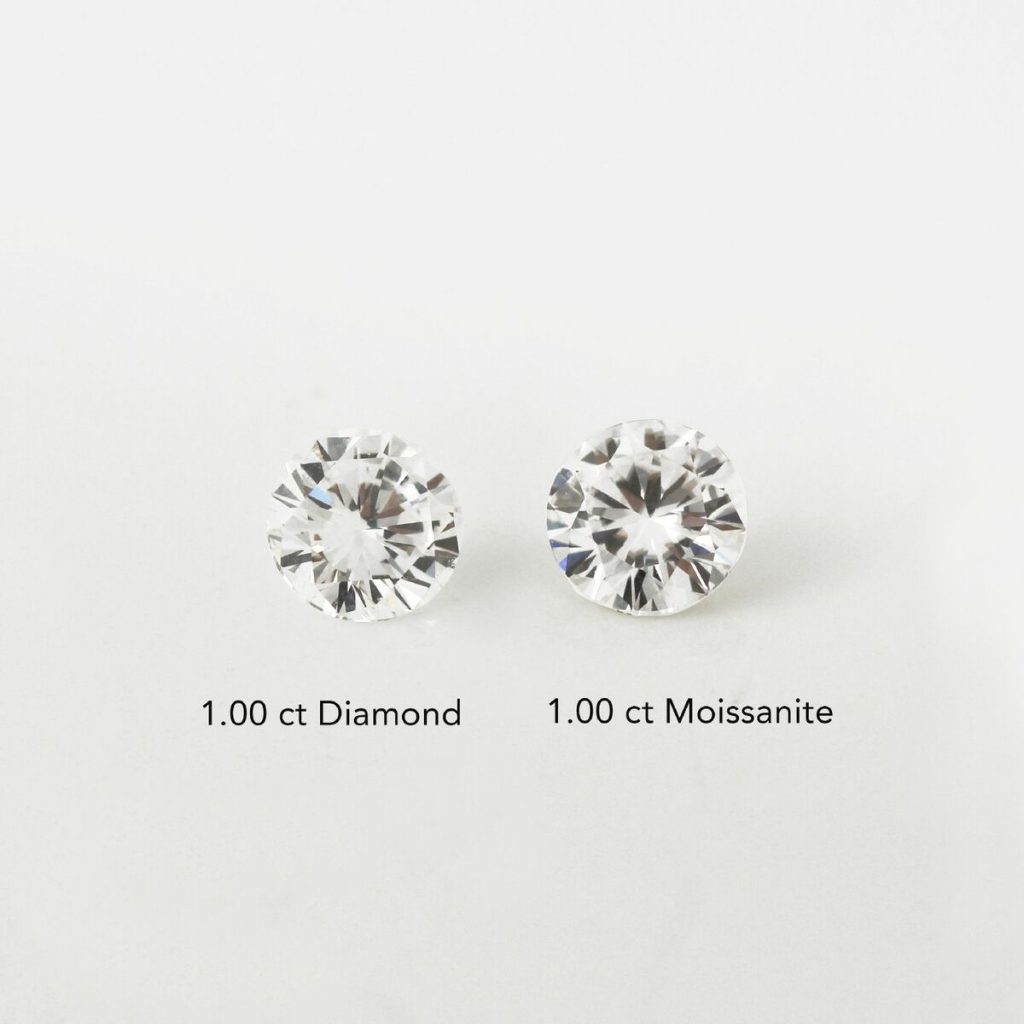
Diamond vs. Moissanite
In addition to lab grown diamonds, there are also a number of lab created simulants that can pose as real diamonds, but are not. These created gemstones may optically appear similar, but do not have the same chemical or physical makeup of a diamond and will perform at different levels. A well know example of an alternative selection is the moissanite gemstone, known for it’s high brilliance. There’s nothing necessarily wrong with gemstone alternatives, so long as they are clearly understood. Diamond alternatives can be an ideal choice for your jewelry if searching for a great value and similar look, without the price and lasting qualities of a genuine diamond.







 1-855-969-7883
1-855-969-7883 info@diamondstuds.com
info@diamondstuds.com



